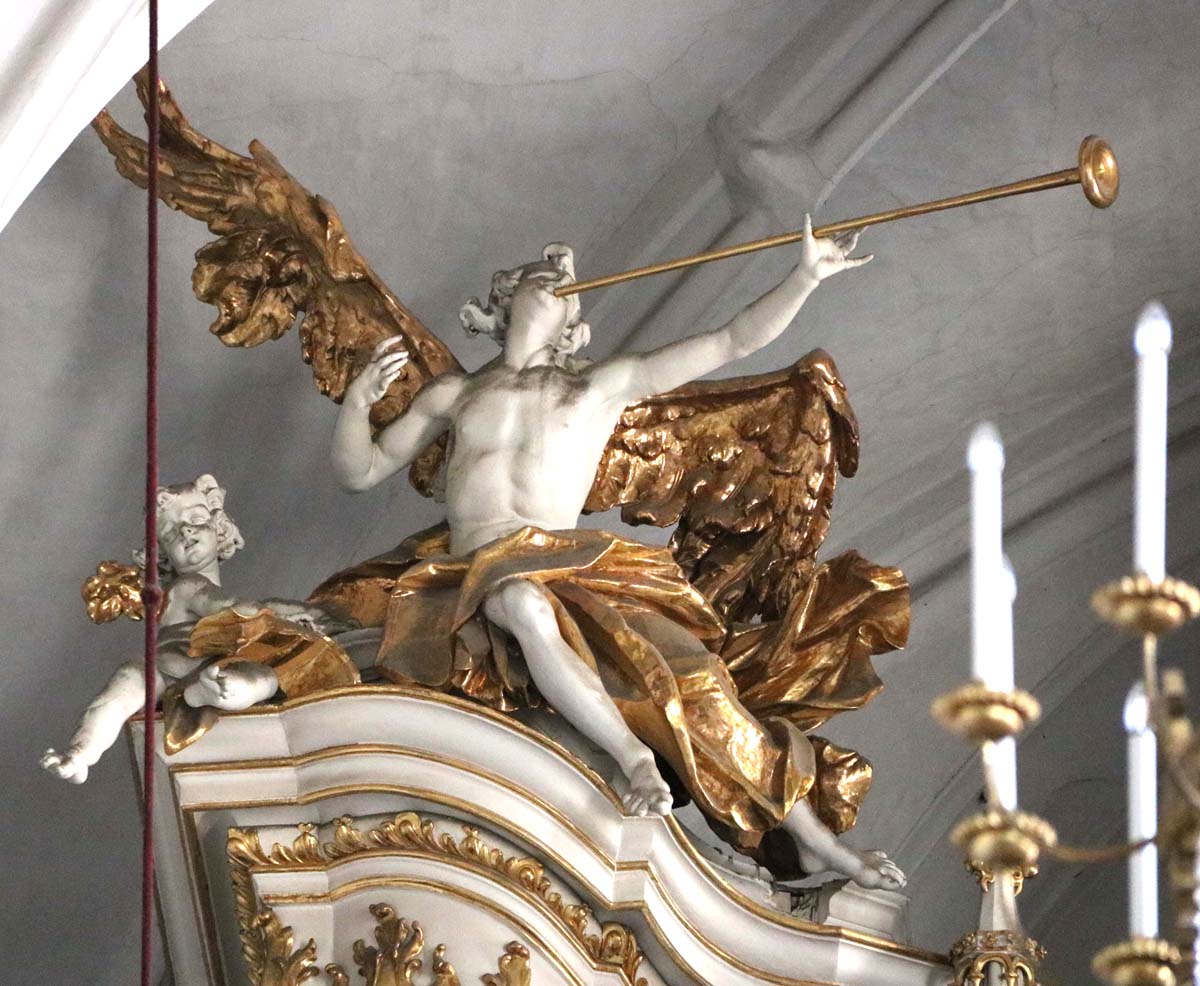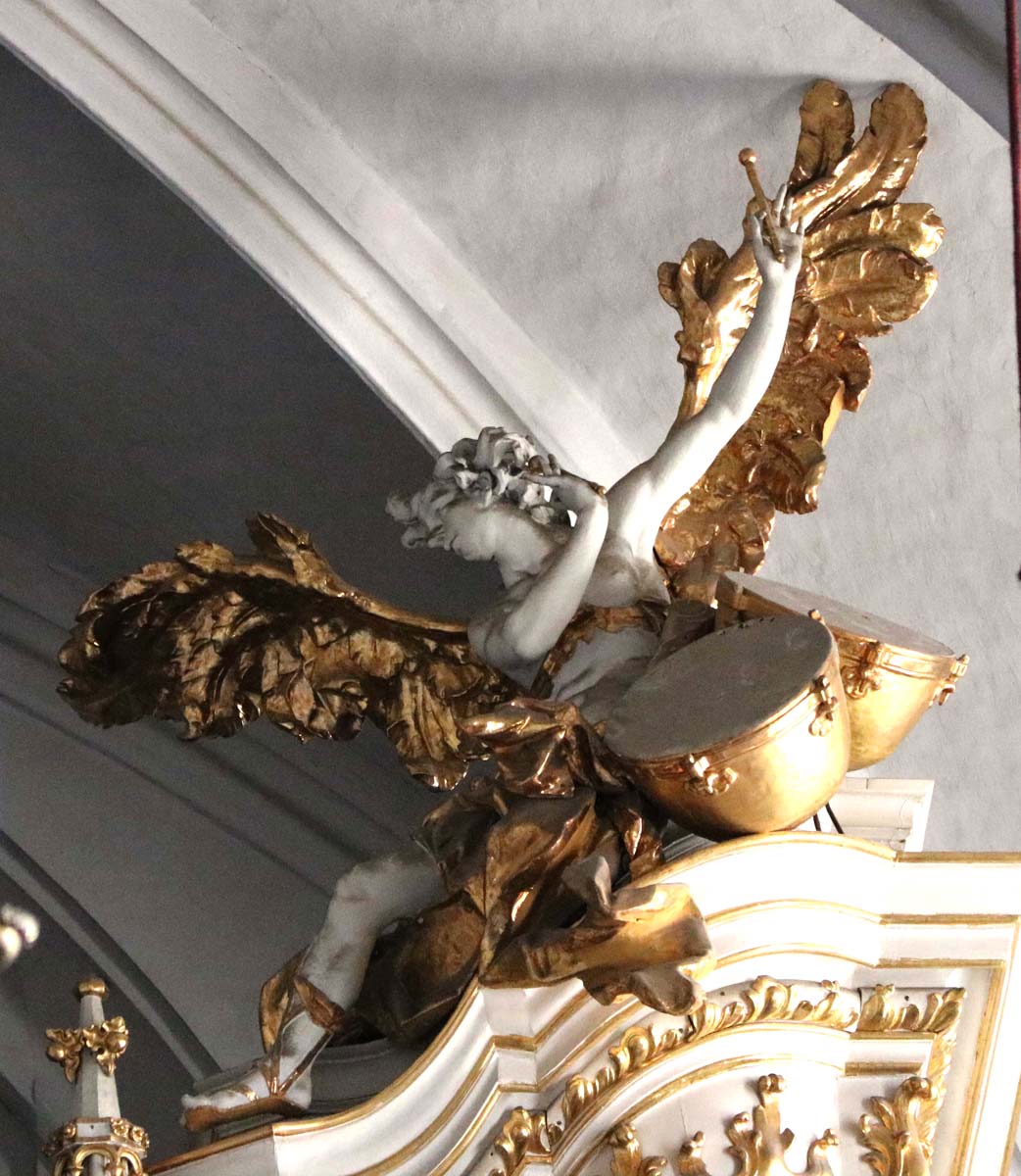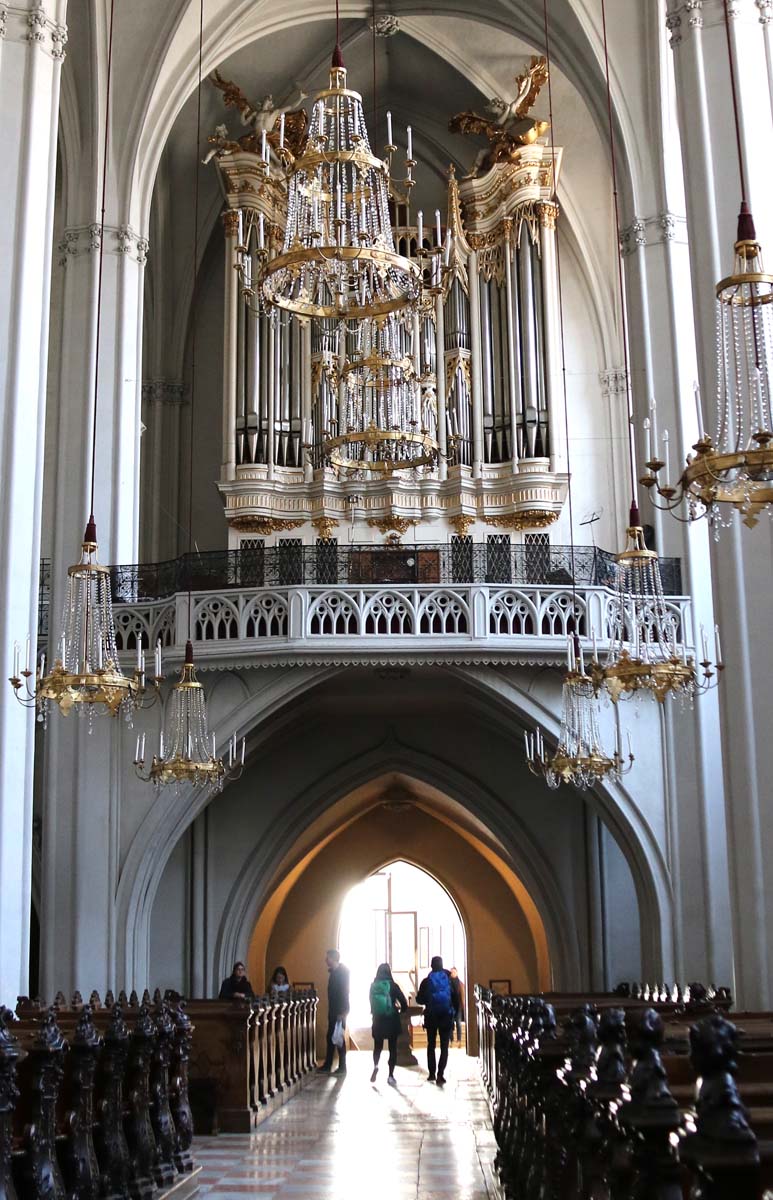Location
Austria, Vienna
Monastery and Parish Church of St Augustine (Augustinerkirche)
Original location:
Austria, Vienna
Benedictine Abbey Church of Our Lady of Monteserrato (Schwarzspanierkirche)
Artwork
Angels from the Organ of the former Schwarzspanierkirche in Vienna
Type
Organ case
Critical History
According to Lippert, his earliest biographer in 1772, Johann Baptist Straub made the decorations for the Abbey Church of Our Lady of Monteserrato in Vienna, from 1730 on.1 The commission was finished not later than winter 1734/5, when Straub returned to Munich. Thus the three remaining angels from the former Hencke-Organ of the Schwarzspanierkirche can be dated between 1730–1734. The consecration of the church took place in 1739. During the Dissolution of the Monasteries under Emperor Joseph II. in 1784, the former Abbey Church of Our Lady of Monteserrato was profaned, the furniture and altars dispersed. The decoration of the organ loft was brought to St Augustine.2
Woeckel tried to attribute a wooden bozzetto (formerly in a private collection, now probably in the Stuttgart Landesmuseum) to Straub's Viennese organ angels but failed to convince.3 Neither the provenance nor the stlystic attribution are reasonable. The highly-agitated drapery and movement of the angels show closeness to Johann Baptist Straub's angels from the organ in Dießen (1738–1740). A comparison with the organ decoration in Birkfeld in Styria (1765) by his younger brother Philipp Jakob shows a direct takeover of the Viennese composition, but with a subdued expression of the figures. Philipp Jakob probably worked together with Johann Baptist in Vienna before he left for Graz in 1733.
Construction / Execution
The organ loft was built into the westwork of the Gothic nave by the court architect Hetzendorf von Hohenberg in 1784, after the new main gate had been built on personal order of Emperor Joseph II.4 For the neo-Gothic organ case Hohenberg reused parts of the Hencke organ from the Schwarzspanierkirche including the figural decoration by Straub. The orginal polychromy of the organ case in reseda green was recoloured in white, the figures partly gilded.5
Components
- Sculpture
- Author: Johann Baptist Straub (Wiesensteig ca. 1704 – Munich 1784)
- Completed: ca. 1730 – ca. 1734
- Patron(s): Anton Vogl von Krallern, abbot
- Technique(s): wood carving
- Material(s): wood
- Polychromy
- Completed: ca. 1730 – ca. 1739
- Patron(s): Anton Vogl von Krallern, abbot
- Polychromy
- First Repolychromy
- Completed: ca. 1784 – ca. 1785
- Technique(s): polished white, water gilding
- Material(s): gold leaf
Comment
During World War II St Augustine's Church was hit by a bomb and the organ was heavily damaged; in 1976 a new instrument was built into the historic organ case by organ makers Rieger, Schwarzach6.
Images
- Vienna, St Augustine, organ, left angel with trumpet and putto (photo by Julia Strobl, 2018)
- Vienna, St Augustine, organ, right angel with timpani (photo by Julia Strobl, 2018)
- Vienna, St Augustine, organ (photo by Julia Strobl, 2018)
Catalogue entry prepared by Julia Strobl
Recommended citation: Julia Strobl, Angels from the Organ of the former Schwarzspanierkirche in Vienna, in: TrArS – Tracing the Art of the Straub Family, 2018, (accessed 25/10/2025) URL



